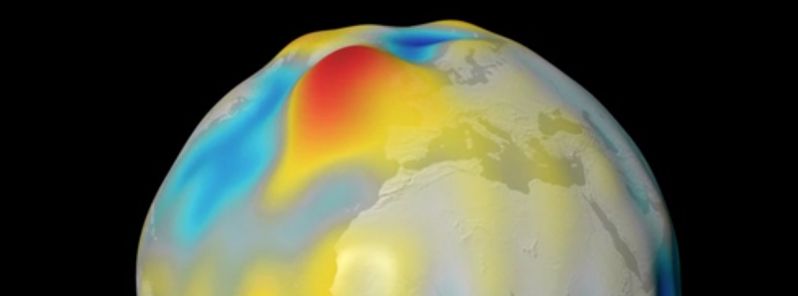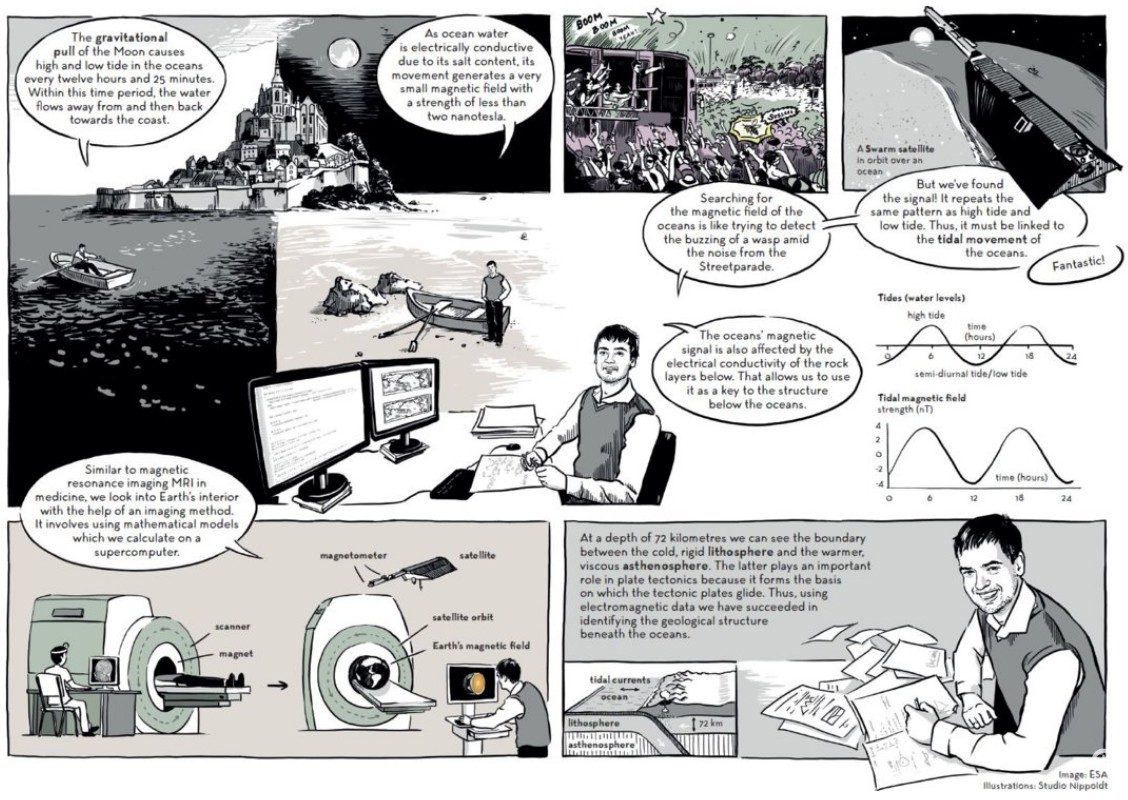Swarm tracking changes in oceans’ magnetic field in more detail that ever before

ESA’s Swarm mission is continually yielding more insight into how our protective shield is generated, how it behaves and how it is changing. Adding yet another string to its bow, Swarm is now tracking changes in the magnetic field produced in the oceans in more detail than ever before.
New results from the trio of Swarm satellites surfaced on this year’s European Geosciences Union meeting in Vienna, Austria, concentrating on how the mission is tracking one of Earth’s more elusive sources of magnetism.
While the magnetic field is created largely by an ocean of superheated, swirling liquid iron in the planet’s outer core, other factors, like magnetized rocks in the crust and the flow of the ocean, also affect the field, ESA says, making a tiny contribution.
When salty ocean water flows through Earth’s magnetic field, an electric current is generated, and this induces a magnetic signal. The field generated by tides is tiny and extremely difficult to measure, but Swarm mission has done this in remarkable detail.
"We have used Swarm to measure the magnetic signals of tides from the ocean surface to the seabed, which gives us a truly global picture of how the ocean flows at all depths – and this is new," said Nils Olsen, from the Technical University of Denmark.
"Since oceans absorb heat from the air, tracking how this heat is being distributed and stored, particularly at depth, is important for understanding our changing climate."
"In addition, because this tidal magnetic signal also induces a weak magnetic response deep under the seabed, these results will be used to learn more about the electrical properties of Earth’s lithosphere and upper mantle."


Credit: Join ETH Zurich on a journey into space: Ulrike Kastrup, Kerstin Fankhauser, Gillian Grün, Jessica Kind, Bettina Gutbrodt, Andrea Dähler; focusTerra, ETH Zürich; Illustrations by Astrid Nippoldt of Studio Nippoldt, 2018
As well as shedding this new light on magnetic tides, Swarm has also yielded a new map of the magnetic field generated by Earth’s crust.
Featured image: ESA / Planetary Visions

Commenting rules and guidelines
We value the thoughts and opinions of our readers and welcome healthy discussions on our website. In order to maintain a respectful and positive community, we ask that all commenters follow these rules.